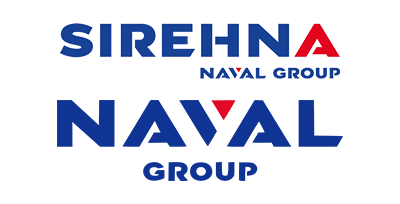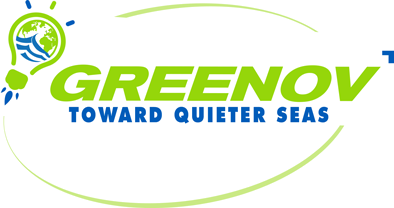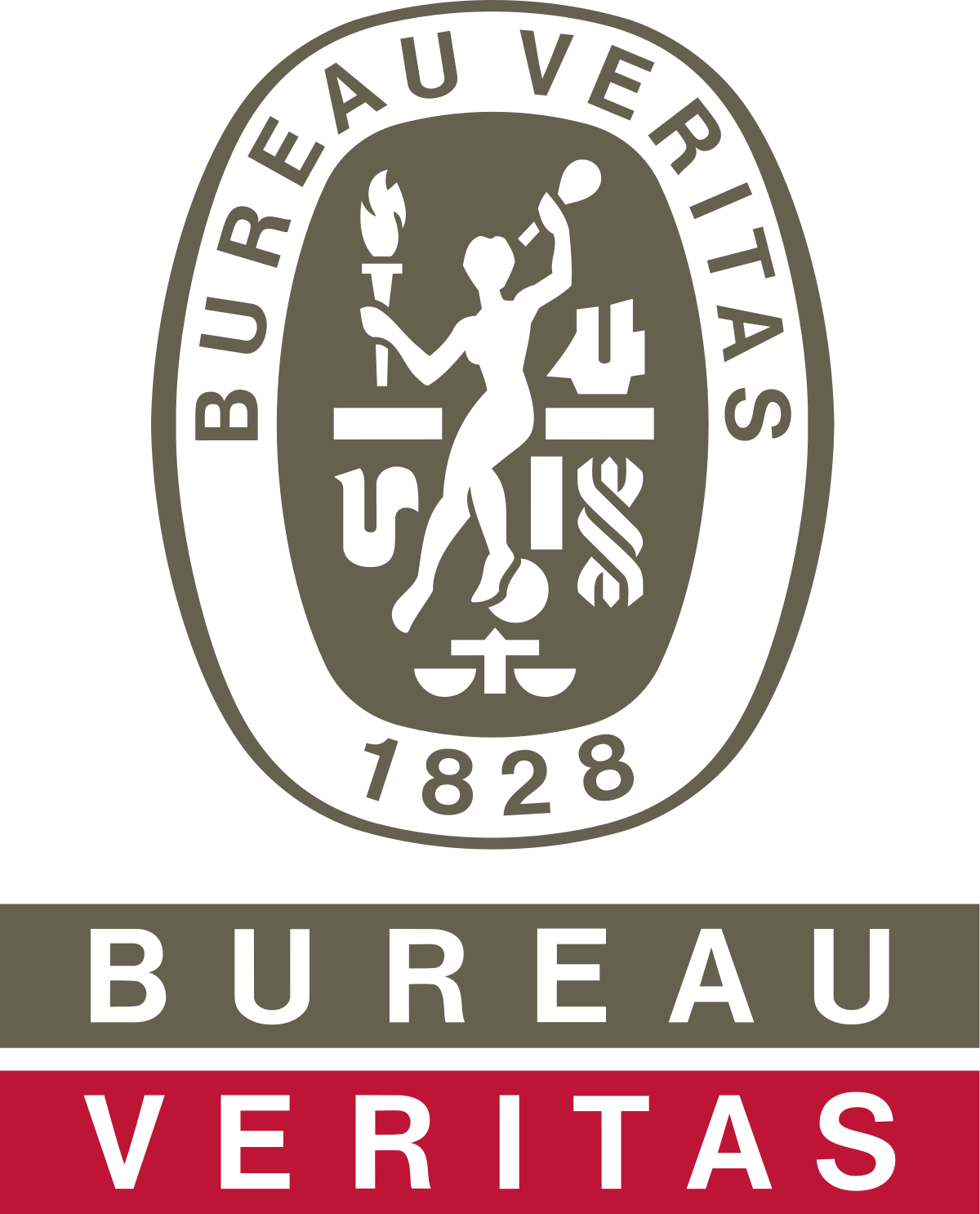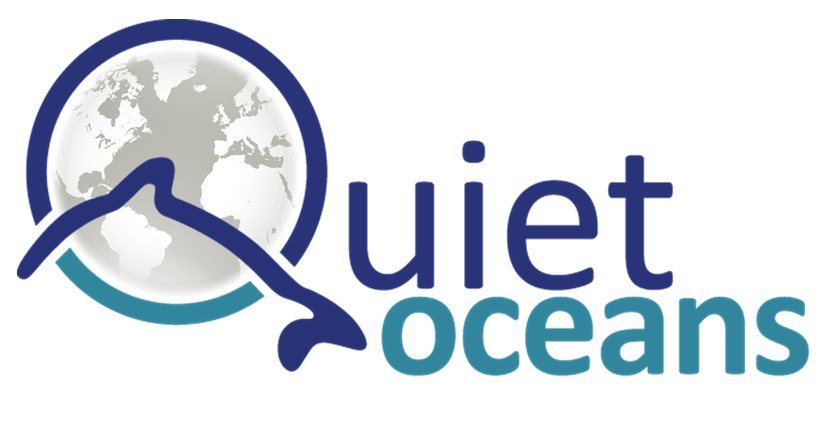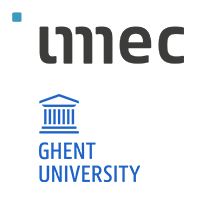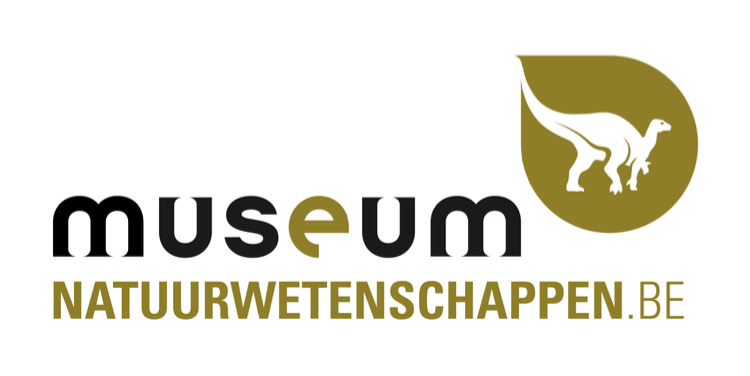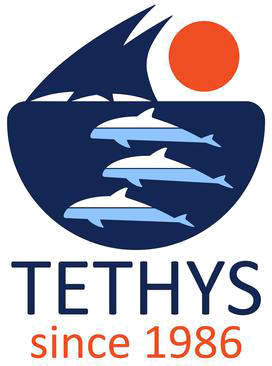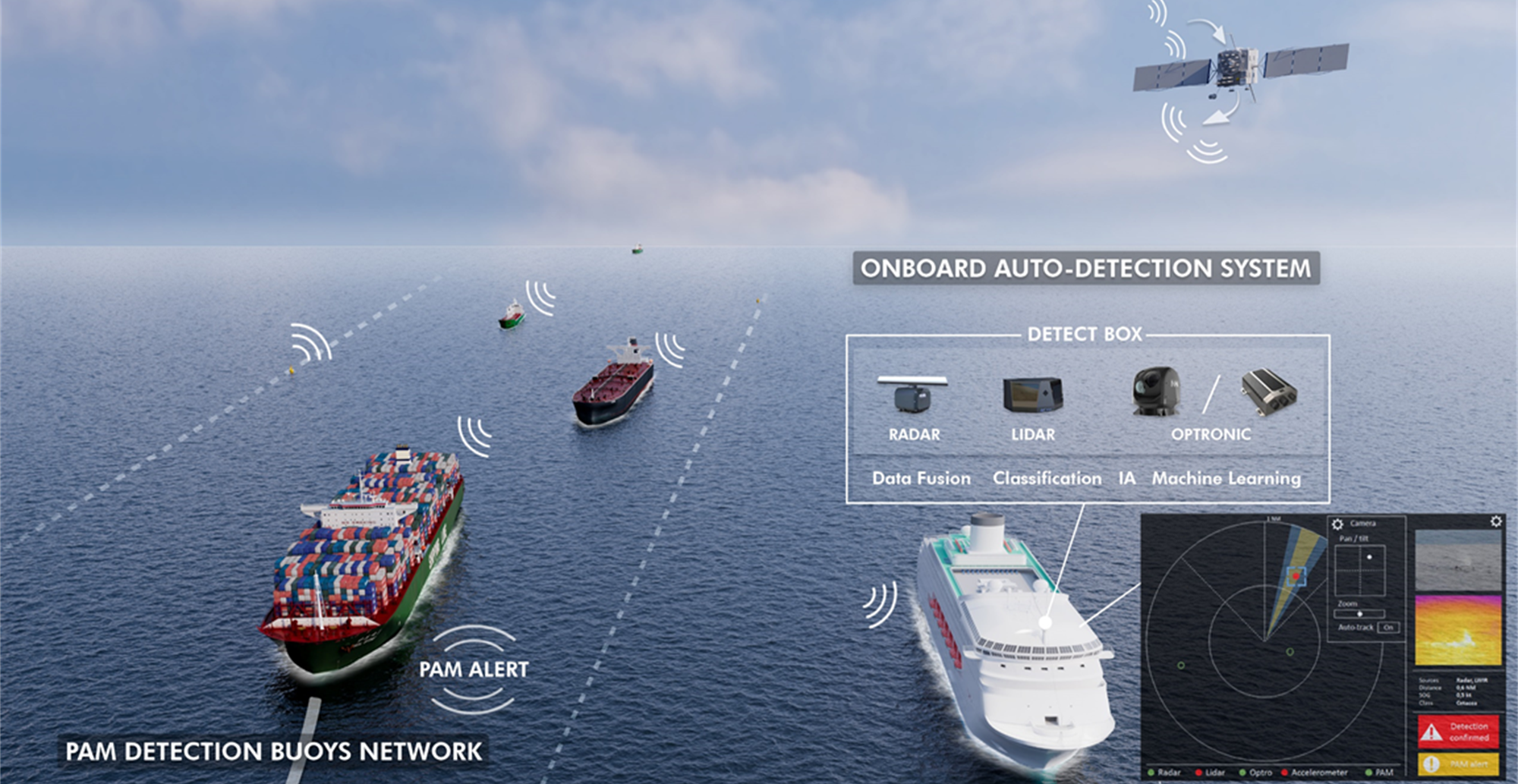
SIREHNA is pleased to announce its involvement and contribution in a new collaborative project ‘LIFE-SeaDetect’, partly funded by the European LIFE program, to develop and demonstrate innovative solutions to significantly reduce the risk of collisions between vessels, cetaceans & UFOs. .
SIREHNA is fully engaged in this innovative project that will last until August 2026, as both work-package leader & affiliated as subsidiary of NAVAL GROUP.
Collisions between vessels and large cetaceans are the first danger for non-natural death for marine mammals that are currently listed as threatened in the IUCN Red List of endangered species. SIREHNA & NAVAL GROUP as well as all the partners involved into the consortium are looking into developing a functional and relevant solution in order to contribute to the reduction of these deadly collisions.
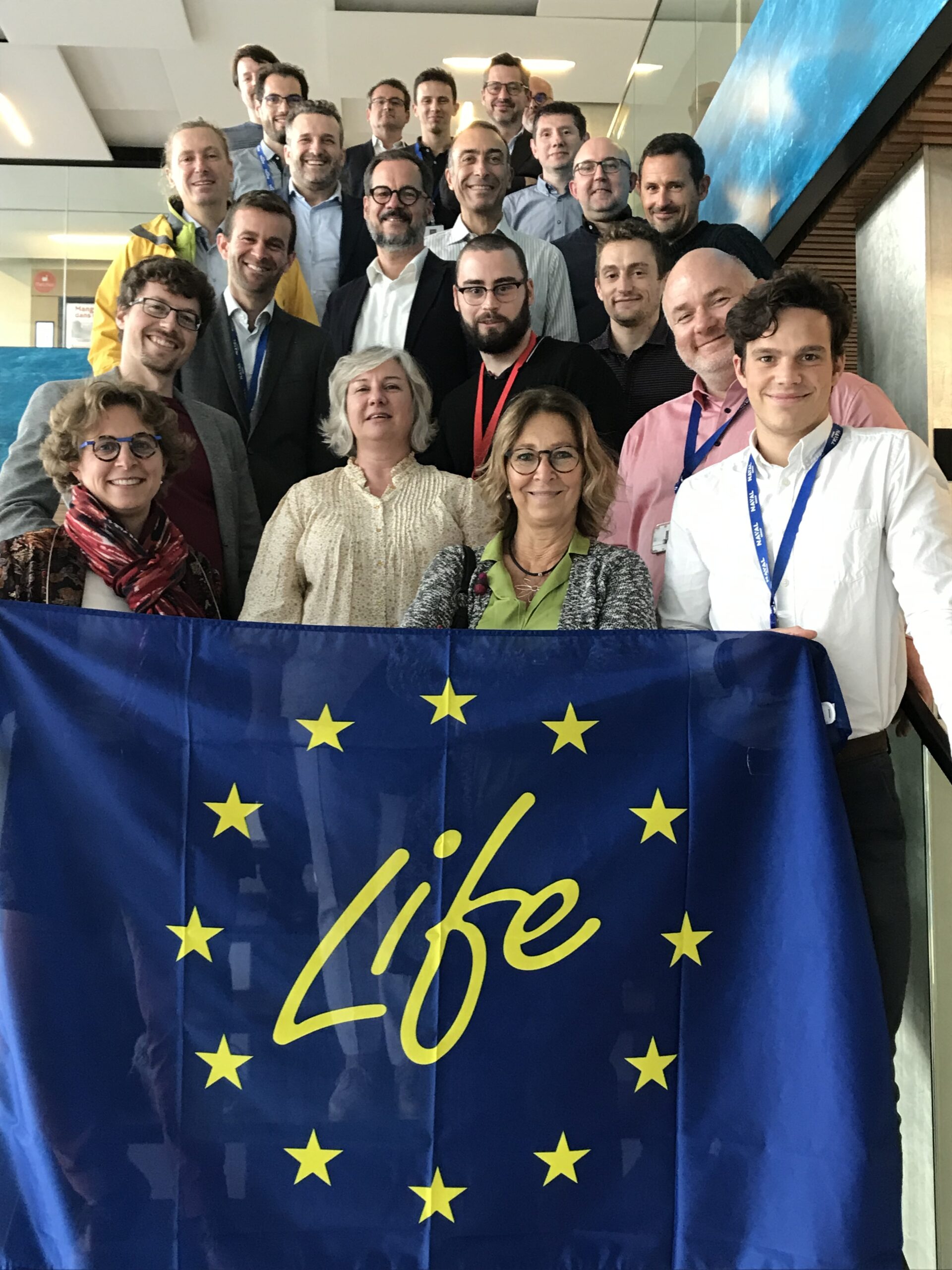
SEADETECT will achieve this very critical protection of cetaceans using 3 complementary systems:
- An on-board multi-sensors “DETECT BOX”: daylight color visible band camera + near-infrared band and thermal infrared band camera + LIDAR + RADAR and a data fusion and AI high-performance system to merge data and classify detection.
- A network of passive acoustic monitoring buoys to detect and geolocate marine mammals and allow the identification of protected corridors for vessels.
- REPCET (Solution developed by Miracetti, stakeholder of the project) to share the detection of whales and other obstacles with vessels present in the area. Obtained detections will feed REPCET sharing detection software to inform equipped vessels of the risk of collision.
PARTNERS & STAKEHOLDERS
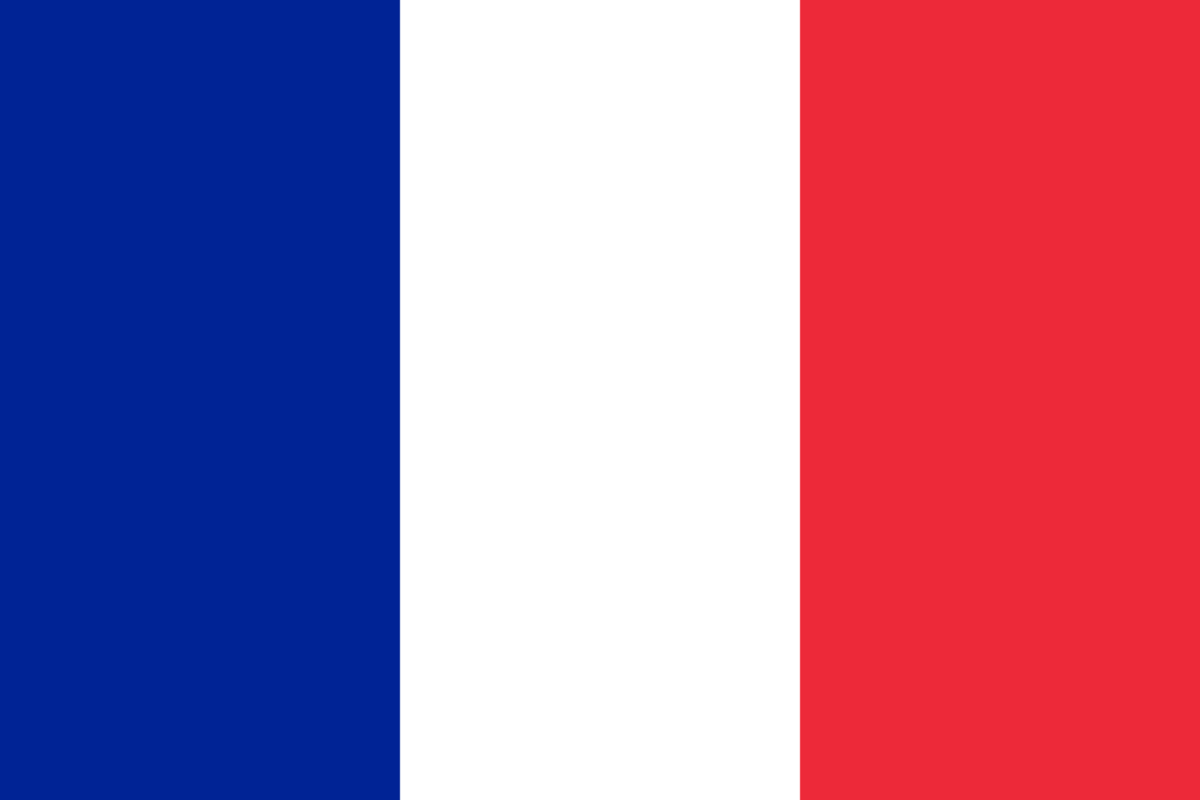
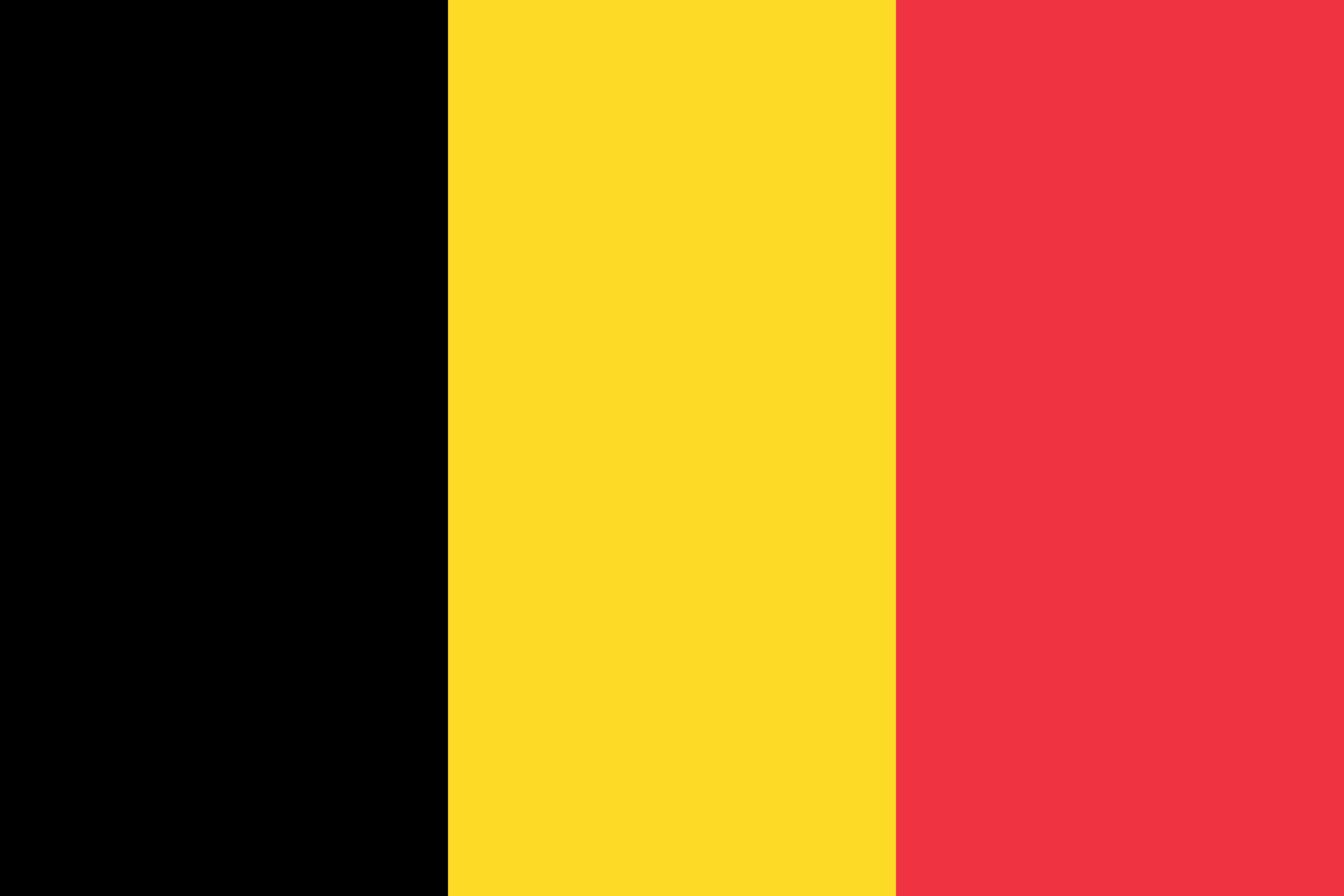
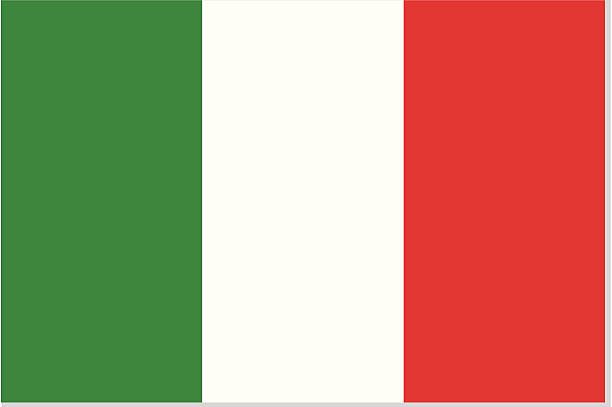
SIREHNA SOPE OF STUDY
SIREHNA will act as work-package leader for the development of the on-board multi-sensors solution and scientific cetaceans assessment.

Credit: Bedok-class MCMVs berthed at Changi
The work-package includes several tasks that will be developed in collaboration with the partners & stakeholders:
- A scientific Cetaceans assessment when near a vessel in order to establish and comprehend their behavior.
- Definition of the system and sensors specification & architecture including acquisition campaign planning. This action will define all technical requirements for the solution. The solution will be designed for large vessels (cargo, liner…).
- Data acquisition on several campaign and vessels
- System production & installation.
When surfacing, cetaceans have a small signature because of their sizes and their temperature gradients. They also stay in surface for a short time to breathe. To increase detection capacity for small signature objects, partners propose a system composed of 3 sensor technologies: radar, LiDAR and optronic (daylight, SWIR and LWIR). Sensors broadcast their detections to a server for processing by a fusion algorithm.
GOALS, OBJECTIVES & EVALUATION OF THE PROJECT
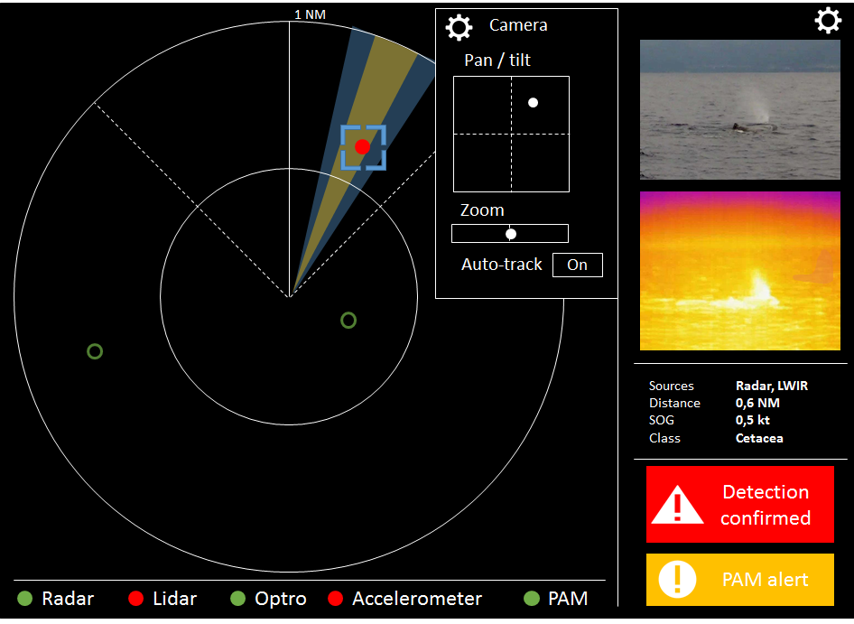
Non-contractual picture of HMI
In fine, the goal is to produce two on-board multi-sensors system, composed of optronic, LiDAR, radar sensors and fusion data processor, installed onboard two vessels and realize campaigns of tests.
The two ships from ‘La Méridionale’ (ex Piana and Kalliste) sail on separated maritime trade routes located in Pelagos between France, Corsica and Sardinia.
The system will be evaluated in large environmental conditions (day, night, up to sea state 3, various weather conditions…) during 12 months for the first ship and 24 months for the second (6 travels of 12 hours / week during one year on each vessel, around 140 000 nautical miles).
Finally, a third evaluation campaign will be led, at least for 6 months, in North sea thanks to a system mounted on board of a research vessel of RBINS partner, for transfer capability demonstration of the system on other ship and with other environment conditions and constraints (weather, sea, cetacean species,…).
